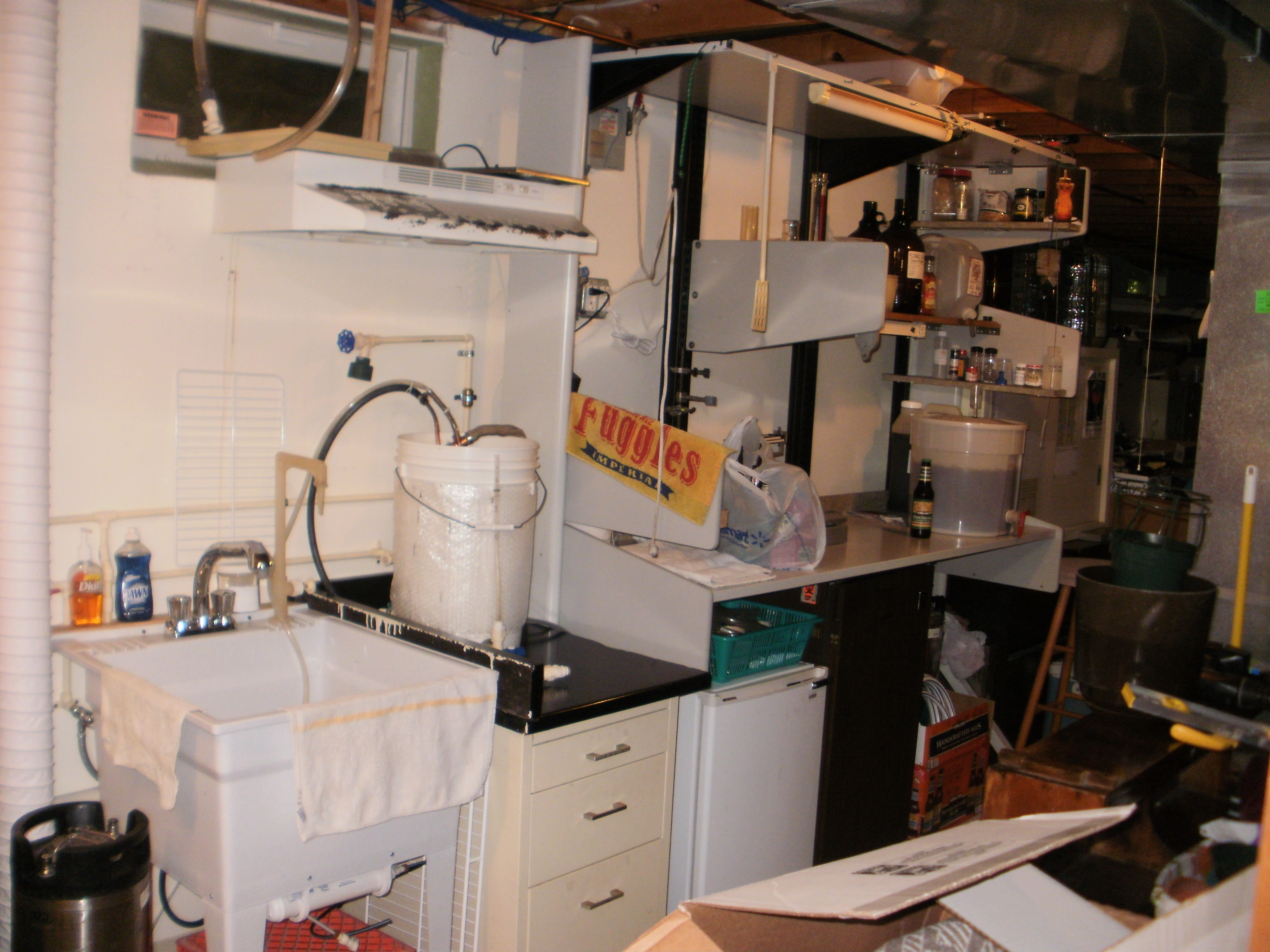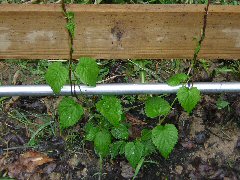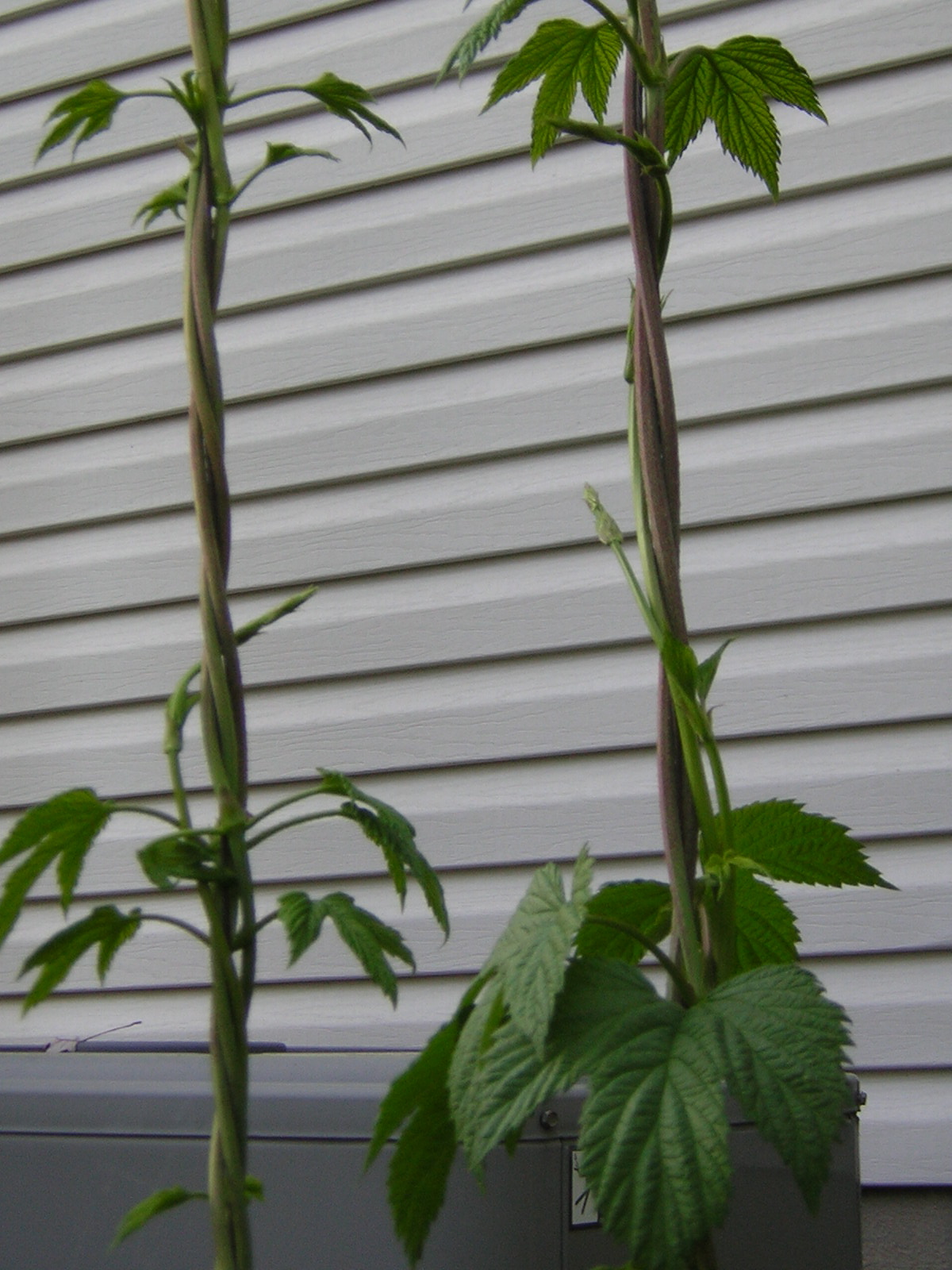- HB Three Bears Minus One Dubbel, (more Jaggery in a darker, stronger brew)
- HB Belgian Bitter (Jaggery brings a caramelly, mapley flavor, even without Belgian yeast)
- HB Winter Solstice Ale (Honey and candied ginger give it character for those long nights)
- HB Best Bitter (Summit Hops give it a delightful tangerine flavor with no orange peel in the brew)
- HoneyBear Halb-Wit (a darkish wheat beer with bitter orange and coriander spice, almost gone now) in bottle
- Cherry Dunkel Weisen (made with cherry juice concentrate, good, too) only competition samples left.
- Scotch Ale 70 (OK, I had to cheat and use some peated malt. Not authentic, but tasty)
- Ordinary Cherry Bitter (using cherry concentrate, almost lost the flavor)
- HB Brown Bear Ale, -- Labels
- Hard Apple Cider, all gone, and a Hard Peary
- Honey Bear Brown Bitter
- Honey Bear Solstice Ale ("original recipe," less hops)
- HB Oberlin Best Bitter (formerly best, see above)
- Java Porter
- AC Current
- Crabby Haze
- Wiseass Red Bitter
- Rostov Porter
- Rostov Porter, take 2.
This year's Oberlin Projects OK, it's clear that spending time keeping this page up to date is taking valuable time away from brewing, damnit. I'm going to finalize the recipes that wind up in regular rotation here at Honey Bear central, and maybe note the extras that come by once in a while. There are new currant bushes in the back yard, after all. And there was the complete remodeling of the Beer Cave, see below. There has been an extended lull in brewing activities, but I have 55lb of pale malt on hand and 33lb of Maris Otter malt extract. There are a couple of pounds of hops in the freezer. Soon, very soon. That new grain mill has yet to taste malt, and it's getting hungry. |
The Last of the Kent, OH brewsPrevious Oberlin products |
Pictures are difficult, because this is a galley kitchen, basically, in my basement, with the furnace and hot water heater behind me. But I put in a second laundry tub with a gooseneck faucet with pull-out sprayer and separate tap for filtered water. I also ran taps for the immersion chiller and found a spiffy coupling that permits the tap over the kettle to swivel out of the way. Then there is the little cabinet on which I put a piece of chem lab slate top, on which the electric kettle sits. Over that is an old range hood to blow the steam out the window. To the right of the kettle, is the large shelving unit with fridges and storage below and storage above. In the far distance is a couple cabinets for grain and ingredients storage, with room for four secondary fermenters on top. So far the temperature has held between 65°F and 72°F without my worrying about it. August in Ohio calls for central air. |
 |
The Hops ProjectSpring 2005, I planted three rhizomes, one each of Fuggles, Goldings, and Northern Brewer. The NB took off this first year, producing sufficient hops for two batches in late 2005 Next year, by May 14, 2006 already the Northern Brewer had reached the top of the trellis, 14 feet tall! The Goldings, looked well, and the Fuggles was only a bit behind. Photos will be posted |
 |
 |
2007's performance was marred by weather-related incidents and overall not enough water, and the harvest was disappointing. The Northern Brewer bines have done the best, Goldings has run off reasonably well, and the Fuggles remained the runt of the litter. In fact, the Fuggles only climbed about 8 feet in this it's third year. And harvesting from a 16' trellis isn't fun, either. I must rethink...
For 2009, I'm trying something radical. I'm erecting a privacy fence on the south edge of the property, only about eight feet high. I'll run hops over this, and with luck I'll be able to harvest while keeping the varieties straight. I ordered three new rhizomes, Nugget, Stirling, and Willamette. These were planted under the fence, and the Fuggles, Northern Brewer, and Golding crowns I transplanted along with 'em.
Clumsily to the left you can see last year's bines getting started up the old 16 foot trellis. There's about three bines on each strand of wire, you can see them twining counterclockwise as they climb. This growth of about four feet was accomplished in just one week! The new privacy fence is just out of the frame to the right of this photo. I'll add more when the bines get going on it. Or perhaps not till next year--it's not very photogenic yet, with first-year and transplanted hops on it. Nothing growing there is feeling constrained by the low height of the fence, as yet. Too soon to tell whether 2010 will bring a good crop or not. 2011. Over the winter the wind blew the fence over a bit (again) so I reset it, and am constructing a brace or two to try to keep it upright. Stupid Oberlin clay... I did manage to put down landscape fabric over the compost and under a bit of mulch before this year's sprouts broke ground, so it's way neater than before. All six rhizomes look to be doing fine so far, and we've had so much rain I've not irrigated at all, although the drip system is ready to step in when needed. |
With the move to Oberlin, I'm working against the family (aversion to the smell of boiling barley and hops appears to be an X-chromosome thing). I have been using a propane burner. The burner is nice and hot, but brewing outside in November is the pits.
Now I'm doing full boils, so the faster boils are quite welcome. For details on the conversion to all-electric brewing, please see the OAFS pages I'm also using Corny kegs, so bottling has ended, too. It's a wonder I haven't been brewing more!
The next set of batches will use Belgian yeast and Summit hops for a citrusy, estery, spicy suite. I'm thinking a ("Summer Solstice") bitter, a Dubbel, a Tripel, and maybe finish off with a Saison with some lambic blend.